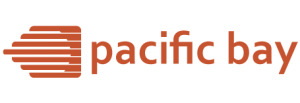Reasons for increased demand for loans in Sweden
An increase in demand for loans means that there is either favorable or unfavorable conditions that has caused the demand to increase. In Sweden, mortgages take a significant percentage of the loans especially in 2017 during the peak of house construction in the country. There was no expectation for a surge in the demand for housing in 2020 during the pandemic but many people who now worked from home preferred single-owned homes rather than renting. This demand caused the price of the houses to increase rapidly and by June 2021 the residential mortgage lending amounted to SEK 4855 billion. The following overview outlines the household indebtedness in Sweden.
Competition in the mortgage market
A large percentage of mortgage loans in Sweden are offered by housing finance institutions. Swedbank, Nordea and Handelsbanken own the largest housing finances. In the recent past, new lenders of mortgages for example Stabelo, Hypoteket, etc., which fund their lending by the composition of Alternative Investment Funds (an investment managed by companies) have entered the market and these lenders operate without a banking license. These new lenders fund their mortgages by helping investors create and manage investment products. These new lenders have imposed competition on the mortgage market by accounting for over 4.9% of new lending in the previous year.
The existing household’s debt obligations in the country
In Sweden, more than 81% of those who own homes have housing debts. This means that the country has a mature mortgage market and practice of ”Låna pengar snabbt to finance housing. This household owing has been rising gradually since 1990. This loans in association to disposable income’s debt ratio is about 200% on average, a level which is high compared to other countries in the region. Young and urban households’ debt ratio is relatively higher than that average. During the covid-19 pandemic, more increment of mortgage loans occurred as a result of exemption from the amortization requirements on the loans although the exemption was written off in August 2021.
The situation of the economy
Sweden’s GDP fell by a large percentage during the start of the pandemic later recovered and by 2021 it had increased by 0.9% from a fall of 2.8% in 2020. This was due to the increased economic activities as a result of higher inventory and high household consumption. This means that housing investments were temporarily affected and in 2021 housing investments increased by 11%. More single-family homes therefore increased and a high percentage of these new homes have mortgage loans financing their housing.



